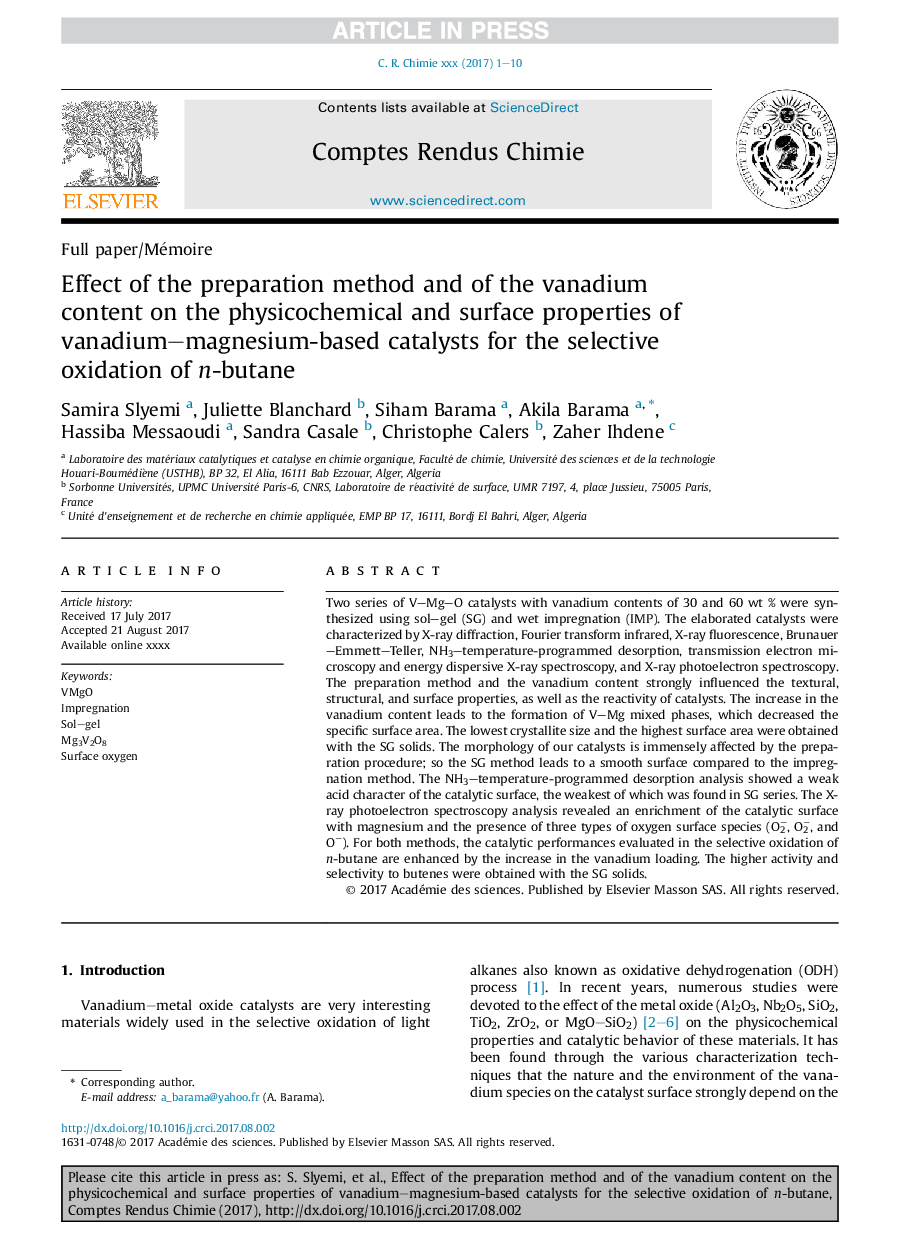| Article ID | Journal | Published Year | Pages | File Type |
|---|---|---|---|---|
| 6594533 | Comptes Rendus Chimie | 2017 | 10 Pages |
Abstract
Two series of V-Mg-O catalysts with vanadium contents of 30 and 60 wt % were synthesized using sol-gel (SG) and wet impregnation (IMP). The elaborated catalysts were characterized by X-ray diffraction, Fourier transform infrared, X-ray fluorescence, Brunauer-Emmett-Teller, NH3-temperature-programmed desorption, transmission electron microscopy and energy dispersive X-ray spectroscopy, and X-ray photoelectron spectroscopy. The preparation method and the vanadium content strongly influenced the textural, structural, and surface properties, as well as the reactivity of catalysts. The increase in the vanadium content leads to the formation of V-Mg mixed phases, which decreased the specific surface area. The lowest crystallite size and the highest surface area were obtained with the SG solids. The morphology of our catalysts is immensely affected by the preparation procedure; so the SG method leads to a smooth surface compared to the impregnation method. The NH3-temperature-programmed desorption analysis showed a weak acid character of the catalytic surface, the weakest of which was found in SG series. The X-ray photoelectron spectroscopy analysis revealed an enrichment of the catalytic surface with magnesium and the presence of three types of oxygen surface species (O2â, O2â, and Oâ). For both methods, the catalytic performances evaluated in the selective oxidation of n-butane are enhanced by the increase in the vanadium loading. The higher activity and selectivity to butenes were obtained with the SG solids.
Related Topics
Physical Sciences and Engineering
Chemical Engineering
Chemical Engineering (General)
Authors
Samira Slyemi, Juliette Blanchard, Siham Barama, Akila Barama, Hassiba Messaoudi, Sandra Casale, Christophe Calers, Zaher Ihdene,
